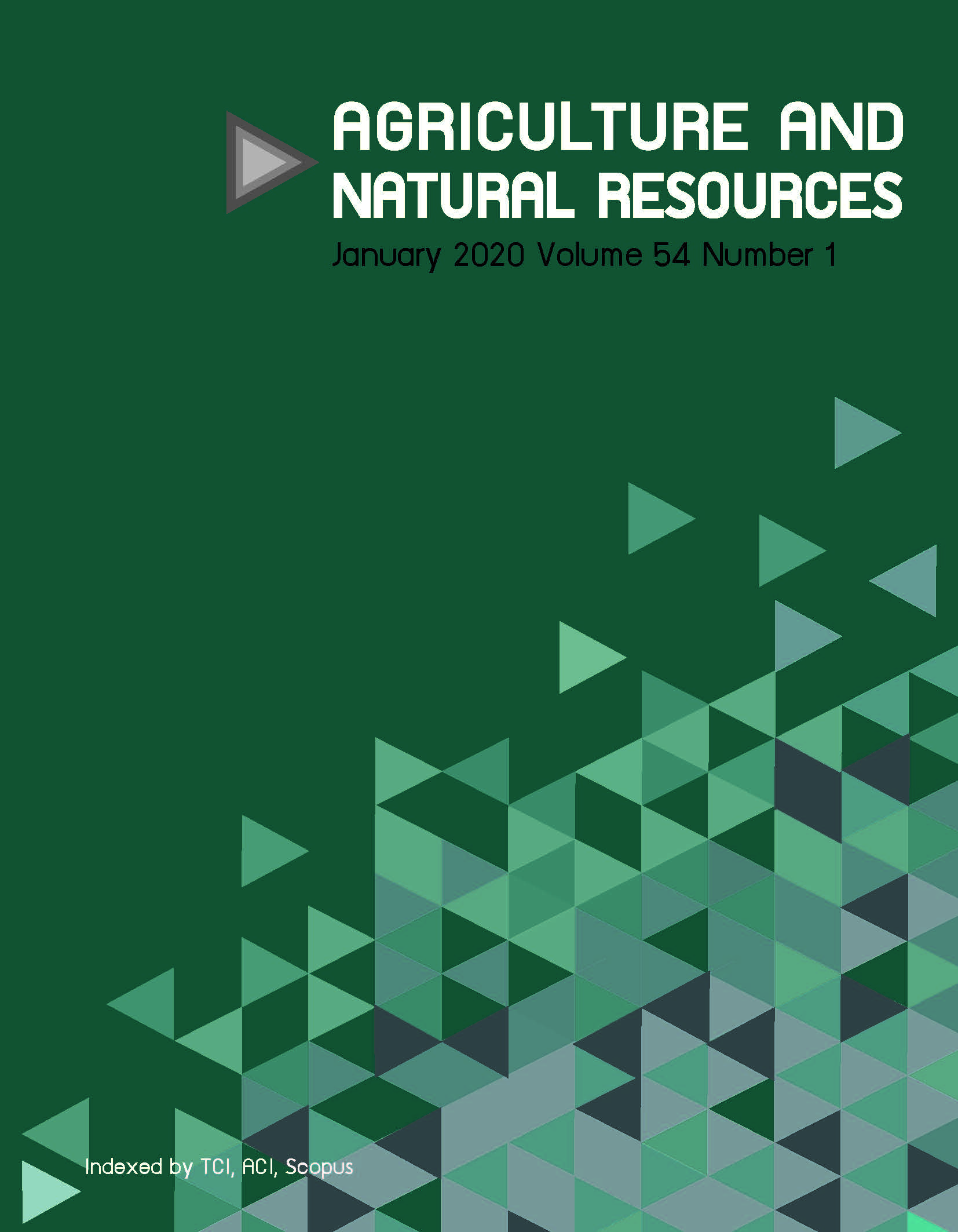Hydroponic cultivation of black galingale (Kaempferia parviflora Wall. ex. Baker)
Keywords:
Black galingale, Deforestation, Flavonoid contents, Hydroponic system, Kaempferia parvifloraAbstract
Black galingale (Kaempferia parviflora Wall ex Baker) rhizome is a popular herbal dietary supplement and traditional medicine in Asia. Mass production of high-quality rhizome is conventionally conducted in highland tropical fields. Hydroponic cultivation is a potential alternative approach that promotes environmental-friendly rhizome production. Hydroponic and potting systems were tested in two different environments: a nylon net house and an air-conditioned room. The highest black galingale yields were obtained using hydroponics with volcanic pebble at 170 g/bucket, followed by sponge (131 g/bucket), popper (98 g/bucket) and no medium control (77 g/bucket), respectively. In contrast, rhizomes grown under control conditions yielded significantly higher flavonoid contents than other treatments, with total flavone of 664 μg/g, followed by popper (442 μg/g), volcanic pebble (399 μg/g) and sponge treatments (196 μg/g), respectively.
Downloads
Published
How to Cite
Issue
Section
License
Copyright (c) 2020 Kasetsart University

This work is licensed under a Creative Commons Attribution-NonCommercial-NoDerivatives 4.0 International License.
online 2452-316X print 2468-1458/Copyright © 2022. This is an open access article under the CC BY-NC-ND license (http://creativecommons.org/licenses/by-nc-nd/4.0/),
production and hosting by Kasetsart University of Research and Development Institute on behalf of Kasetsart University.







